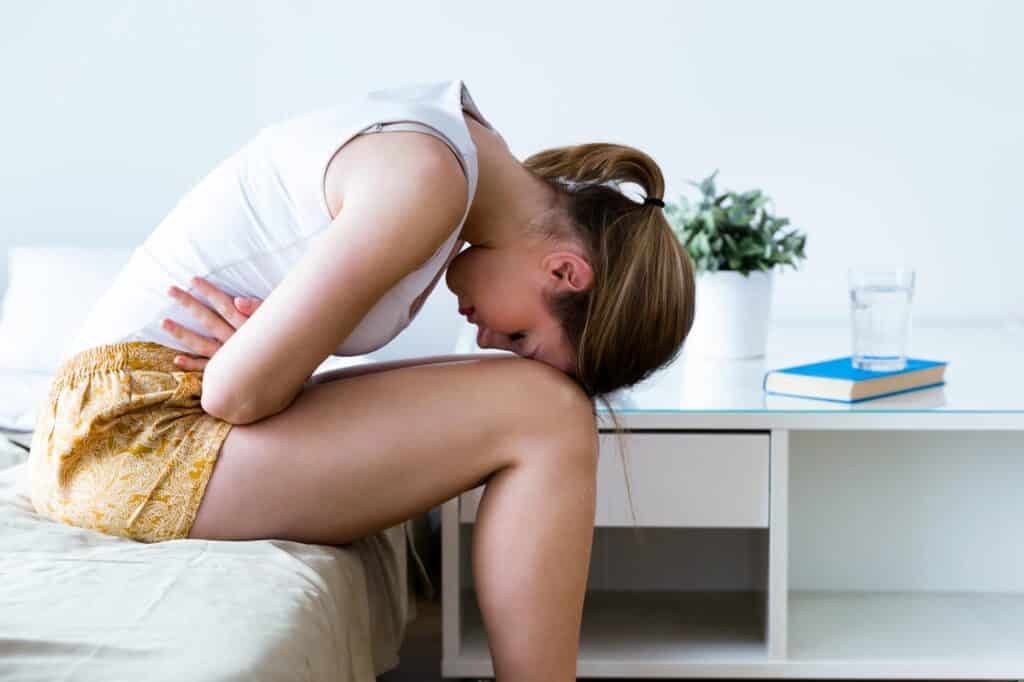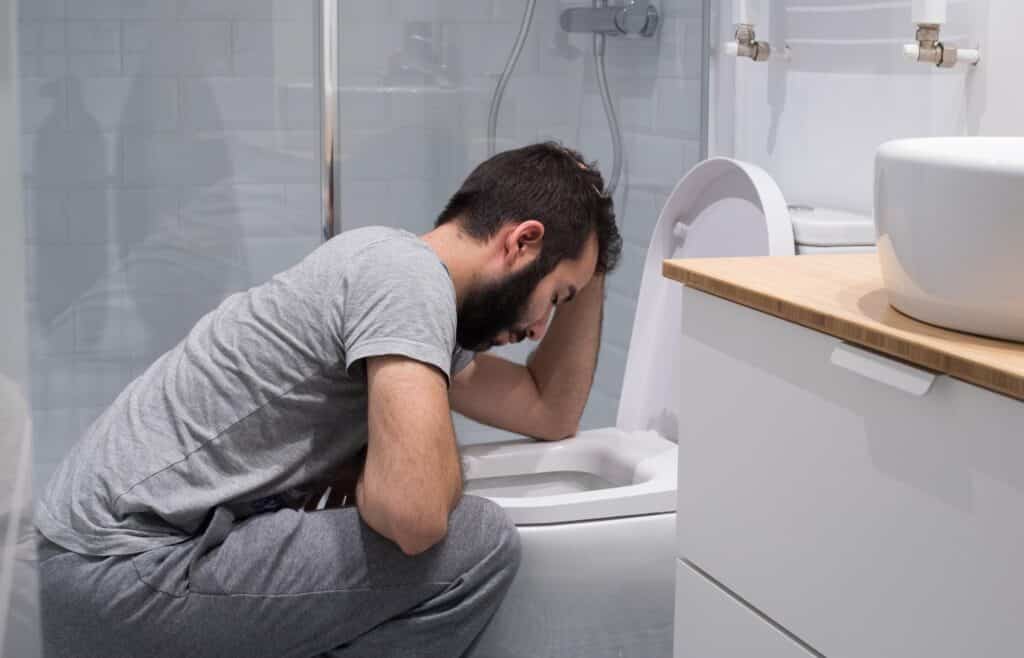Is Detoxing from Opioids Painful or Dangerous?
Understanding Opioids Detox: What Happens During Withdrawal?
When your body has become dependent on opioids, stopping their use triggers a cascade of opioids withdrawal symptoms that can feel overwhelming and frightening. Your body, which has adapted to function with these substances, must now relearn how to operate without them.
Physical Withdrawal Symptoms
Physical withdrawal symptoms typically begin within hours of your last dose and can include:
- Severe nausea and persistent vomiting
- Frequent diarrhea leading to dehydration
- Intense muscle aches and bone pain
- Profuse sweating and chills
- Tremors and restlessness

Psychological Withdrawal Symptoms of Opioids
The psychological withdrawal component can be equally challenging, manifesting as:
- Overwhelming anxiety and panic attacks
- Severe insomnia lasting days or weeks
- Dramatic mood swings and irritability
- Intense cravings that feel impossible to resist
- Depression and feelings of hopelessness
Every person’s withdrawal experience is unique. Some individuals may experience mild discomfort, while others face severe, potentially dangerous symptoms. Factors like the type of opioid used, duration of use, dosage, and your individual physiology all influence the intensity and duration of withdrawal.
The unpredictability of these symptoms is precisely why attempting detox alone can be so risky. What starts as manageable discomfort can quickly escalate into a medical emergency without proper support and monitoring.
One potential solution for managing these cravings during the recovery process is the use of Vivitrol, a medication that reduces cravings and boosts success when combined with counseling support.
The 3 Biggest Dangers of Detoxing from Opioids at Home
While the desire to detox privately at home may feel appealing, the home detox risks present serious threats that can escalate quickly without warning. Understanding these opioid withdrawal dangers helps illuminate why professional medical supervision becomes essential rather than optional.
1. Severe Withdrawal Symptoms of Opioids Without Medical Support
Severe opioid withdrawal symptoms can rapidly transform from uncomfortable to life-threatening when left unmonitored. The human body’s response to opioid cessation creates a cascade of physiological changes that require careful observation and immediate intervention capabilities.
For instance, the Cleveland Clinic outlines several severe withdrawal symptoms that can occur during this period.
Dehydration risk emerges as one of the most immediate concerns during home detox from opioids. Persistent vomiting and diarrhea can lead to dangerous fluid loss within hours. Without proper medical assessment and IV fluid replacement when necessary, dehydration can cause:
- Kidney dysfunction and potential failure
- Dangerous drops in blood pressure
- Electrolyte imbalances affecting heart rhythm
- Confusion and altered mental status
Respiratory distress represents another critical concern that home environments cannot adequately address. Some individuals experience breathing complications during withdrawal, particularly those with underlying health conditions or concurrent substance use. The absence of medical monitoring equipment and trained staff means these potentially fatal symptoms may go unrecognized until it’s too late.
The challenges of coping with intense physical pain and discomfort alone extend beyond physical endurance. Muscle aches, joint pain, and cramping can become so severe that individuals resort to dangerous pain management methods or return to opioid use simply to find relief. Without access to appropriate medications and pain management protocols, the suffering becomes unnecessarily prolonged and intense.
Sleep deprivation compounds every other symptom, creating a cycle where exhaustion makes pain feel more intense, anxiety more overwhelming, and decision-making more impaired. Home detox environments lack the structured support systems and medical interventions that can break these destructive cycles before they spiral out of control.
The isolation inherent in home detox means no trained professional can distinguish between normal withdrawal progression and symptoms requiring immediate medical attention, leaving individuals vulnerable to complications that could otherwise be prevented or quickly treated. Therefore, seeking help from professionals such as those at Cedar Oaks Wellness should be seriously considered for a safer detox process.
2. Increased Risk of Overdose After Opioids Detox
One of the most devastating scenarios is when individuals try to detox from opioids at home without understanding how much their bodies change during withdrawal. Your opioid tolerance—the amount of the substance your body needs to feel the same effect—drops significantly within just days of stopping use.
This loss of the opioids tolerance creates a dangerous period where your previous “normal” dose becomes potentially deadly. Many people who successfully complete home detox believe they can go back to using the same amounts if they relapse. This misunderstanding proves fatal for countless individuals who don’t realize their bodies can no longer handle the same quantities.
The statistics are alarming:
- Overdose risk increases by 40-60% in the weeks immediately following detox
- Most fatal overdoses occur within the first month after withdrawal
- People who detox at home face triple the overdose risk compared to those in medically supervised programs
Without medical supervision, there’s no professional evaluation of your changing tolerance levels or guidance about relapse dangers. Healthcare providers in supervised settings monitor these physical changes and provide essential education about post-detox vulnerability.
If you’re thinking about detoxing from opioids, it’s crucial to get professional help instead of trying a risky home detox. For those in Ohio, exploring options like Cedar Oaks Wellness, which offers personalized support and effective addiction recovery strategies, could be a lifesaving decision.
The severe opioid withdrawal process affects your respiratory system, making you more vulnerable to respiratory distress if you do relapse. Your breathing patterns, already weakened during withdrawal, become even more susceptible to opioid-induced respiratory depression at lower doses than before.
3. Psychological Distress Leading to Relapse
The emotional and mental challenges of home detox risks extend far beyond physical discomfort, creating a dangerous psychological landscape that can derail recovery efforts. Without professional mental health support, individuals face overwhelming mood instability that swings between deep depression, intense anxiety, and explosive irritability. These emotional extremes can feel unbearable, especially when experienced alone.
Suicidal thoughts in addiction recovery represent one of the most serious concerns during unsupervised withdrawal. The combination of chemical imbalances, hopelessness, and intense cravings creates a perfect storm where self-harm may seem like the only escape. Home environments lack the immediate intervention capabilities that professional facilities provide when these dangerous thoughts emerge.
Relapse triggers multiply exponentially without structured support systems. Common environmental cues – familiar locations, stressful situations, or even certain people – can trigger overwhelming urges to use. The absence of trained counselors means these moments become crises rather than manageable challenges.
Professional care provides essential tools for managing mental health during detox:
- 24/7 crisis intervention when suicidal ideation occurs
- Therapeutic techniques to process difficult emotions safely
- Medication management for co-occurring mental health conditions
- Peer support groups that reduce isolation and shame
The psychological foundation built during professionally supervised detox becomes the cornerstone of long-term recovery, while home detox often leaves individuals emotionally unprepared for the ongoing challenges of sobriety.
Why Medical Opioids Detox Programs Are Safer and More Effective
The benefits of medical detox become evident when we compare the safety and effectiveness of supervised care to the isolation of home withdrawal. Professional facilities, such as those offering addiction treatment in Ohio, provide a protective environment where trained medical staff monitor your vital signs, hydration levels, and symptom progression around the clock. This constant vigilance allows healthcare providers to intervene immediately when complications arise, preventing the escalation of symptoms that could become life-threatening.
The Role of Medication-Assisted Treatment (MAT)
A key aspect of safe opioid detox is the implementation of medication-assisted treatment (MAT). Licensed physicians can prescribe medications like methadone or buprenorphine combined with naloxone to significantly reduce withdrawal intensity. These medications work by:
- Stabilizing brain chemistry to minimize physical discomfort
- Reducing intense cravings that drive relapse behavior
- Preventing dangerous withdrawal complications like seizures or cardiac issues
In cases where prescription drugs are involved, such as opioids, prescription pill rehab in Ohio becomes essential.
Individualized Care Plans for Opioids Detox
The level of care provided in professional detox extends beyond basic medical monitoring. Treatment teams create individualized care plans that account for your specific opioid use history, medical conditions, and psychological needs. This personalized approach addresses unique challenges you may face, whether managing chronic pain, treating co-occurring mental health disorders, or accommodating physical limitations.
How Medical Detox for Opioids Overcomes Home Withdrawal Dangers
The structured environment of a medical detox eliminates the 3 biggest dangers of detoxing from opioids at home by providing immediate medical intervention, maintaining your safety during vulnerable moments, and offering comprehensive support that addresses both physical and emotional aspects of withdrawal. This level of care dramatically improves your chances of completing detox successfully while maintaining your health and dignity throughout the process.
Insurance Options for Medical Detox
Moreover, if insurance coverage is a concern, facilities like Cedar Oaks Wellness Center offer options for those with BCBS or Med Mutual insurance plans.
Managing Mental Health During Detox and Beyond
The journey through opioid detox extends far beyond managing physical withdrawal symptoms. Your emotional and psychological well-being deserves the same careful attention and professional care as your physical recovery.
The Importance of Dual Diagnosis Treatment
Dual diagnosis treatment becomes essential when mental health conditions like depression, anxiety, or trauma coexist with addiction. These conditions often fuel each other in a destructive cycle—untreated depression may drive someone to use opioids for relief, while opioid use can worsen depressive symptoms. Professional detox programs recognize this connection and address both simultaneously.
Evidence-Based Therapies for Mental Health Support
Mental health support during addiction recovery includes evidence-based therapies that create stability during this vulnerable time:
- Cognitive Behavioral Therapy (CBT) helps identify and change harmful thought patterns
- Dialectical Behavioral Therapy (DBT) teaches emotional regulation skills
- Individual counseling provides personalized coping strategies
These therapeutic interventions significantly reduce the risk of psychiatric emergencies, including severe mood swings or suicidal thoughts that can emerge during withdrawal.
The Role of Stress Management in Recovery
Stress management in recovery forms the foundation of lasting sobriety. Learning healthy ways to handle life’s pressures—whether through mindfulness practices, exercise, or structured daily routines—prevents stress from becoming a relapse trigger.
Ongoing Support for Mental Health After Detox
Your mental health journey doesn’t end when detox is complete. Quality treatment centers provide ongoing support, helping you build the emotional resilience needed for sustained recovery and a fulfilling life ahead. In places like Ohio, addiction recovery programs are designed to support mental health through integrated care, therapy, and community resources, ensuring a comprehensive approach to recovery.

